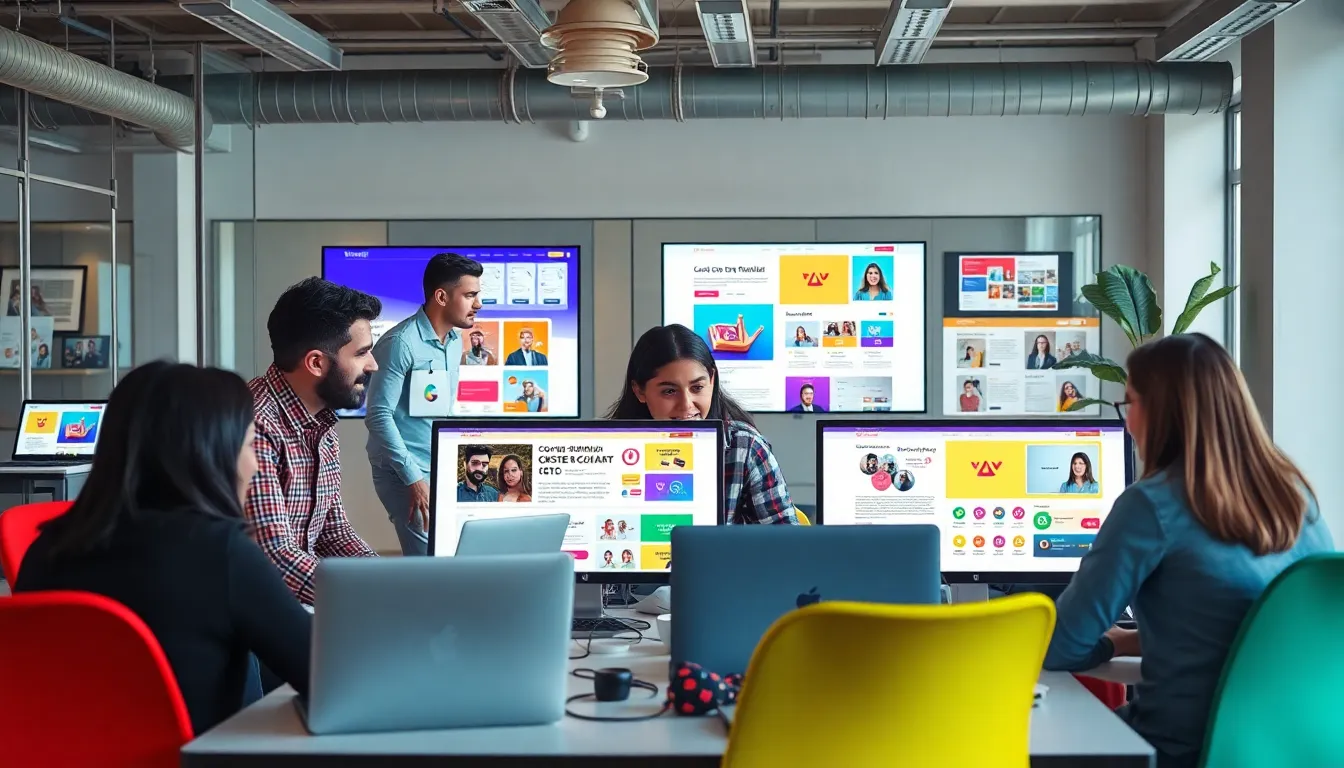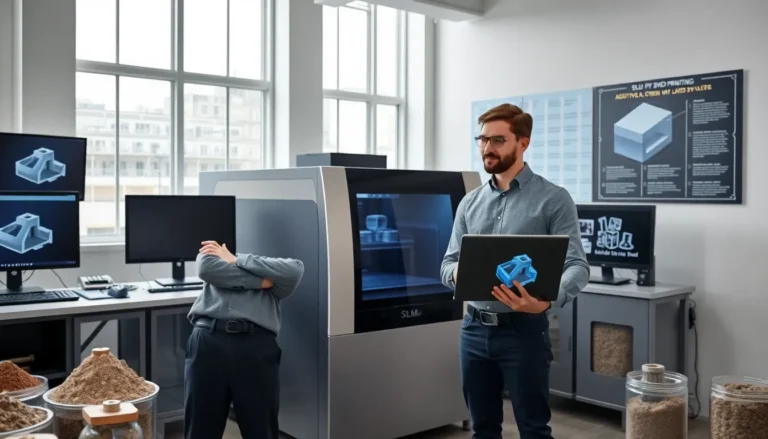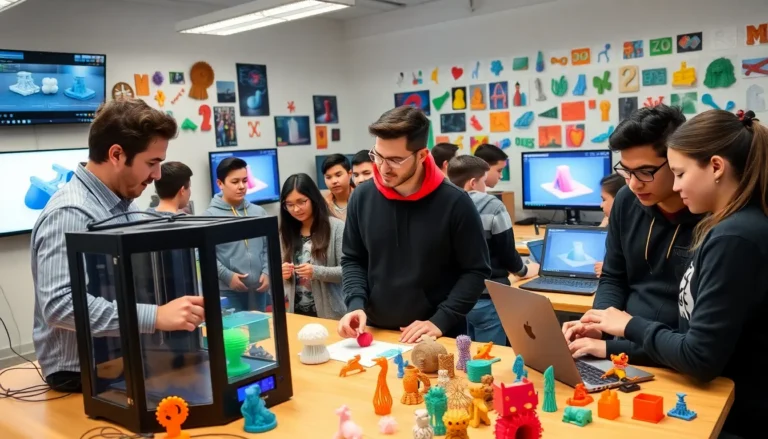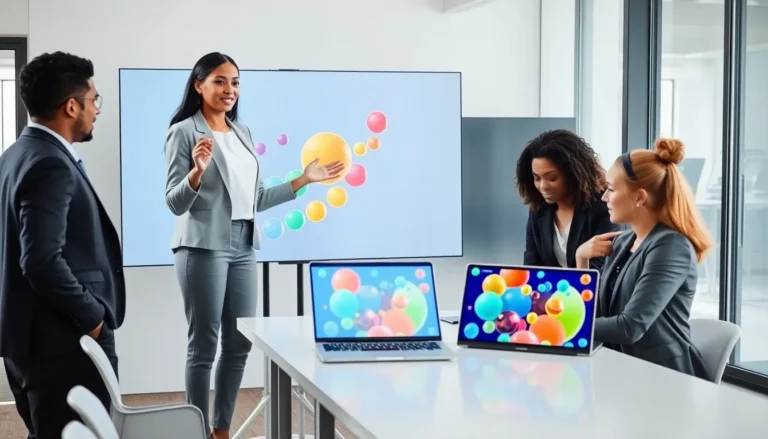Table of Contents
ToggleIn today’s fast-paced digital world, the way people create and organize content has evolved dramatically. Free form apps are at the forefront of this transformation, offering users the flexibility to express their ideas without the constraints of traditional formats. These innovative applications allow for a more fluid approach to design and collaboration, making them increasingly popular among creatives and professionals alike.
With free form apps, users can easily manipulate text, images, and other elements on a blank canvas, fostering creativity and encouraging unique solutions. Whether for brainstorming sessions, project planning, or artistic endeavors, these tools empower individuals to visualize their thoughts in a way that suits their personal style. As the demand for versatile and user-friendly applications grows, understanding what free form apps are and how they can enhance productivity becomes essential for anyone looking to streamline their creative process.
What Is Free Form App?
A free form app is a digital tool designed for unrestricted content creation and organization. These applications enable users to manipulate various elements like text, images, and graphics on a blank canvas, eliminating the constraints of traditional formats. Users can arrange and customize their workspace to fit their individual needs, facilitating creativity and innovation.
These apps cater to a wide variety of tasks. For example, brainstorming sessions become more dynamic as users visually map out their ideas. Project planning benefits from a flexible design, allowing for the easy rearrangement of components as projects evolve. Free form apps often come equipped with collaboration features. Team members can work together in real-time, enhancing communication and productivity.
Popular free form apps include tools like Notability, Miro, and Microsoft OneNote. Each app offers distinct capabilities, but they all support freeform creativity. Users experience a seamless integration of different media types, providing a comprehensive platform for diverse projects.
The adaptability of free form apps makes them suitable for various professions. Designers, educators, and business professionals utilize these tools to enhance workflows and produce engaging content. Understanding the core functionalities of free form apps can significantly improve efficiency in content creation and organizational tasks.
Key Features of Free Form App

Free form apps offer several key features that enhance user experience and promote creativity. These functionalities cater to diverse needs, making the apps versatile for various tasks.
User-Friendly Interface
User-friendly interfaces simplify navigation, enabling users to quickly access features and tools. Intuitive layouts support drag-and-drop functionality, allowing seamless placement of text, images, and other elements. Clear icons and straightforward menus facilitate efficient use, reducing the learning curve for new users. Responsive design ensures compatibility across devices, promoting accessibility anytime, anywhere.
Customizable Templates
Customizable templates provide users a solid foundation to build upon, saving time and effort. These templates cater to specific tasks, such as project management or brainstorming. Users can modify colors, layouts, and elements to align with their personal style or branding. Flexibility in design ensures that users can create a unique workspace that enhances productivity and inspiration.
Benefits of Using Free Form App
Free form apps offer numerous advantages for users seeking flexible and efficient content creation. These tools not only enhance collaboration but also improve overall productivity.
Enhanced Collaboration
Enhanced collaboration stands out as a significant benefit of free form apps. These applications often include real-time editing features, allowing multiple users to work simultaneously on projects. Integrated communication tools, such as chat or comments, facilitate immediate feedback and discussions, fostering a unified approach to tasks. User permissions and access controls allow managers to customize team contributions, ensuring that everyone plays an appropriate role in the creative process. For example, platforms like Miro enable teams to brainstorm and iterate freely while visualizing ideas collectively.
Improved Productivity
Improved productivity is another compelling advantage of free form apps. By providing an organized yet flexible workspace, these tools streamline the creative process. Users can quickly access features that aid in idea generation, planning, and execution, significantly reducing time spent navigating cumbersome menus. Customizable templates and drag-and-drop functionality allow for accelerated content creation tailored to specific needs, eliminating barriers associated with conventional formats. With features designed to adapt to various workflows, professionals across industries experience increased efficiency and focus, preserving valuable time for more critical tasks.
Use Cases for Free Form App
Free form apps serve various purposes across different fields, allowing users to tailor their approach to specific tasks. Their flexibility supports both project management and creative workflows effectively.
Project Management
Free form apps enhance project management by providing customizable platforms for tracking tasks and milestones. Users can create visual project maps, enabling them to lay out timelines and assign responsibilities clearly. Additionally, incorporating collaborative features allows teams to update project statuses in real time and communicate directly within the app. Tools for prioritizing tasks and integrating deadline reminders further streamline workflows, reducing the likelihood of missed deadlines. For example, teams can use Notability to sketch out project plans or utilize Miro for interactive brainstorming sessions to generate ideas collaboratively.
Creative Workflows
Free form apps significantly boost creative workflows by allowing users to experiment with various design elements without restrictions. Users can easily combine text, images, and multimedia into a cohesive presentation. This flexibility fosters innovation, as creators can visualize concepts in numerous ways. Apps like Microsoft OneNote offer users the ability to create mood boards and annotate images, thereby enhancing the development process. Additionally, customizable templates suited for different creative projects enable streamlined design practices, making it easier for artists and designers to focus on their vision without getting bogged down by rigid layouts.
Free form apps represent a significant shift in how individuals approach content creation and organization. By offering a flexible and customizable workspace, these tools empower users to unleash their creativity and enhance collaboration. Whether for brainstorming, project management, or creative workflows, free form apps cater to diverse needs across various professions. Their user-friendly interfaces and real-time collaboration features not only streamline processes but also foster innovation. As the digital landscape continues to evolve, embracing these applications can lead to improved productivity and more dynamic creative solutions.







